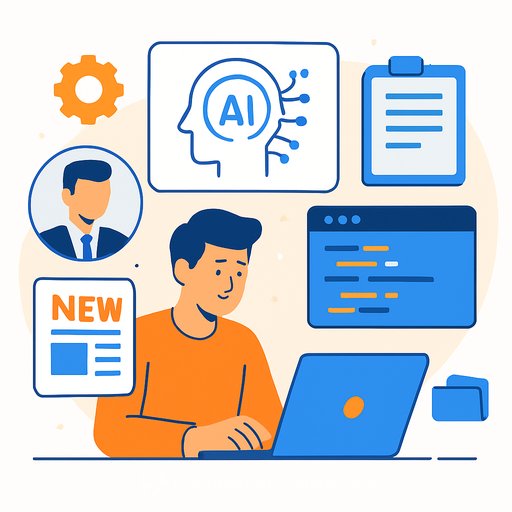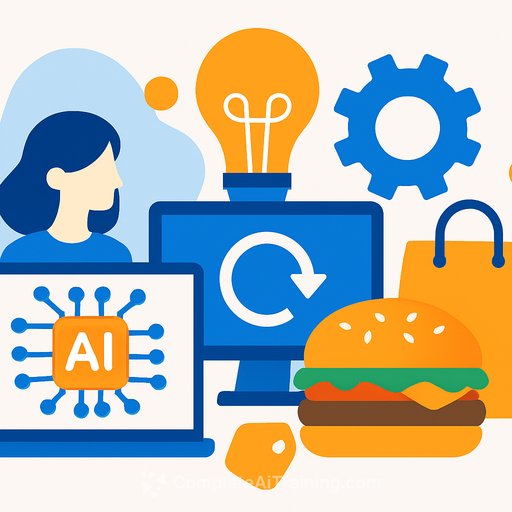Google Cloud's AI Gambit: What the Design Layoffs Signal for Product Teams
Google has cut over 100 roles across Google Cloud design in early October 2025, with deep reductions in UX research and platform experience. This isn't a routine trim. It's a reallocation from people-heavy design functions to raw AI engineering capacity-models, compute, and data.
For product leaders, this marks a clear shift in how big tech will build: fewer manual research loops, more AI-led workflows, and a premium on infrastructure and speed. Expect similar moves across the industry.
What changed at Google Cloud
- Layoffs concentrated in quantitative UX research and service/platform experience teams; some groups reportedly cut by ~50%.
- Budgets moving from research and design to data centers, model development, and supercomputing.
- Leadership expects AI tools to automate large parts of research, testing, and UX optimization.
Why this matters for product development
AI is moving upstream into core product work: discovery, testing, and iteration. The bet is that AI-driven insights can replace a chunk of human research while shrinking time-to-ship.
The trade-off: short-term UX risk and potential blind spots without strong human oversight. Your mitigation plan will define your advantage.
Technical shifts product leaders should expect
- Data-first product discovery: log quality, event taxonomies, and consent flows become as important as interviews.
- Model-centric feedback loops: synthetic users, simulated tests, and automated heuristics on top of live telemetry.
- Design tooling with AI in the loop: interface generation, variant exploration, and copy experiments at scale.
- Compute-aware roadmaps: features planned around inference latency, cost ceilings, and capacity windows.
Risks to manage
- UX debt: algorithmic choices can drift from customer intent without human checkpoints.
- Bias and blind spots: model outputs mirror training data; edge cases get missed.
- Compliance and privacy: data usage, retention, and provenance must be explicit and audited.
- Cost sprawl: unnoticed inference and data egress can erode margins fast.
- Team morale: unclear role paths for designers and researchers will slow delivery.
What to do in the next 90 days
- Map your discovery stack: identify which research tasks shift to AI (surveys, concept tests, copy variants) and which stay human.
- Instrument product telemetry: define core events, add rich context, and enforce data quality SLAs.
- Pilot synthetic testing: use AI agents for task completion tests, then validate with targeted human studies.
- Create an AI review lane: weekly triage for model issues, UX regressions, and policy exceptions.
- Re-skill design and PM: workflows for prompts, evaluation, and guardrails; pair designers with ML leads.
- Set cost guards: per-feature inference budgets and automated alerts.
12-month operating plan (template)
- Q1: Establish data contracts, event standards, and model evaluation criteria. Pick 2-3 AI-in-loop bets tied to revenue or retention.
- Q2: Ship AI-assisted research workflows. Automate variant generation and copy tests. Add synthetic testers to CI.
- Q3: Centralize feature flags and experiment governance. Tie model metrics to product KPIs. Optimize infra costs.
- Q4: Consolidate learnings into playbooks. Formalize AI oversight and incident response. Expand to new product lines.
New roles and team patterns
- AI Product Architect: owns model selection, latency/cost targets, and evaluation strategy per feature.
- Design-ML Partner: blends UX systems with prompt libraries, guardrails, and evaluation datasets.
- Data Experience Lead: ensures event semantics, consent flows, and analytics integrity for product decisions.
- AI QA and Safety: tests failure modes, bias, and abuse pathways before launch.
Tooling to pilot
- Synthetic user testing: task flows, accessibility checks, and edge-case exploration.
- LLM-based analytics summarization: convert raw telemetry into decision-ready insights.
- Automated UX variant generation: layout, microcopy, and onboarding sequences with guardrails.
- Evaluation harnesses: golden datasets, acceptance thresholds, and regression gates in CI/CD.
Metrics that matter
- Cycle time: concept to shipped experiment.
- Defect escape rate: model-related UX or safety issues post-release.
- Telemetry-driven NPS proxies: friction scores, task success, time-to-value.
- Cost per successful inference and per active user.
- Time-to-signal: how fast you get confident directional data.
Competitive context
This move helps Google lean into compute-heavy AI bets and shorten iteration loops. It directly pressures teams at Microsoft, OpenAI, and others competing on model quality and deployment speed.
Expect sustained investment in infrastructure and model tuning. Watch budget notes and hiring signals from leadership for where the next wave of product capabilities will land. For background on resource allocation trends, see Alphabet's investor updates: Investor Relations.
Governance and guardrails
As AI replaces portions of research, governance needs to get tighter, not looser. Define standards for data sourcing, consent, model evaluation, human approval points, and incident response.
If you need a baseline, review the NIST AI Risk Management Framework: NIST AI RMF.
Bottom line for product leaders
Google is signaling a product model where AI does more of the discovery and iteration work and humans focus on judgment, standards, and taste. If you want to stay competitive, rebuild your operating system: data-first discovery, AI-in-loop design, rigorous evaluation, and clear cost controls.
Reskill your teams, upgrade your telemetry, and make governance part of delivery. The companies that execute this shift cleanly will ship faster and learn faster-with fewer people.
Skill up your team
- Role-based learning paths: AI Courses by Job
- Deepen credentials: AI Automation Certification
Your membership also unlocks:






